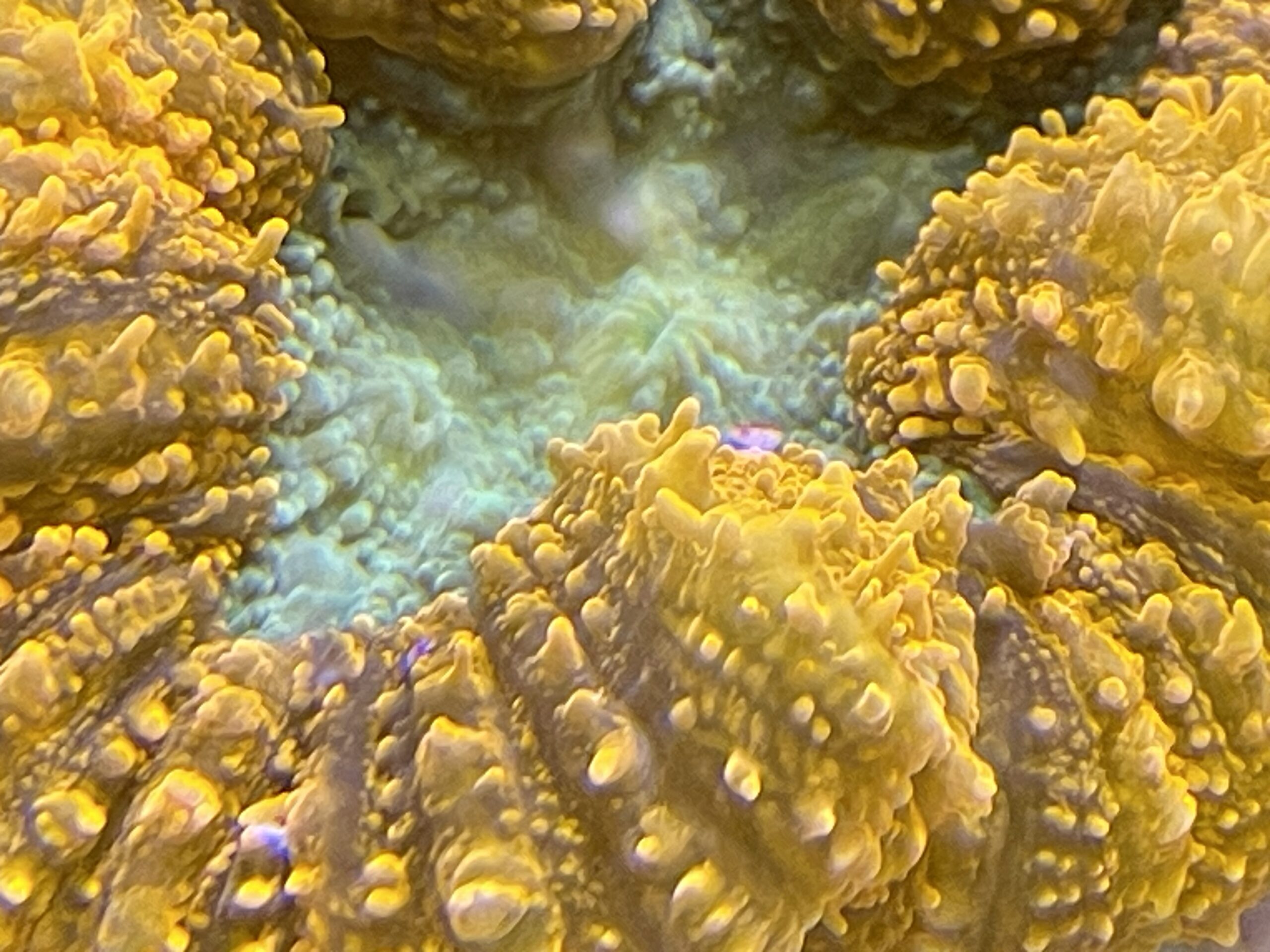We are often asked to recommend which LPS species are the most suitable, but when we gazed into our tank today the answer had been staring us right in the face. Lobos!
Sold as Spiny brain corals, Lobed Brain corals, or even “Symphyllia spp.” Lobophyllia make great aquarium corals and specimens like this Lobophyllia robusta are even commonly available from marine wholesalers. What you see here is a single corallite, several inches in diameter. The polyp is textured and looks spiky, but they’re called Spiny brains because of the spikey septal teeth in the coral skeleton below.
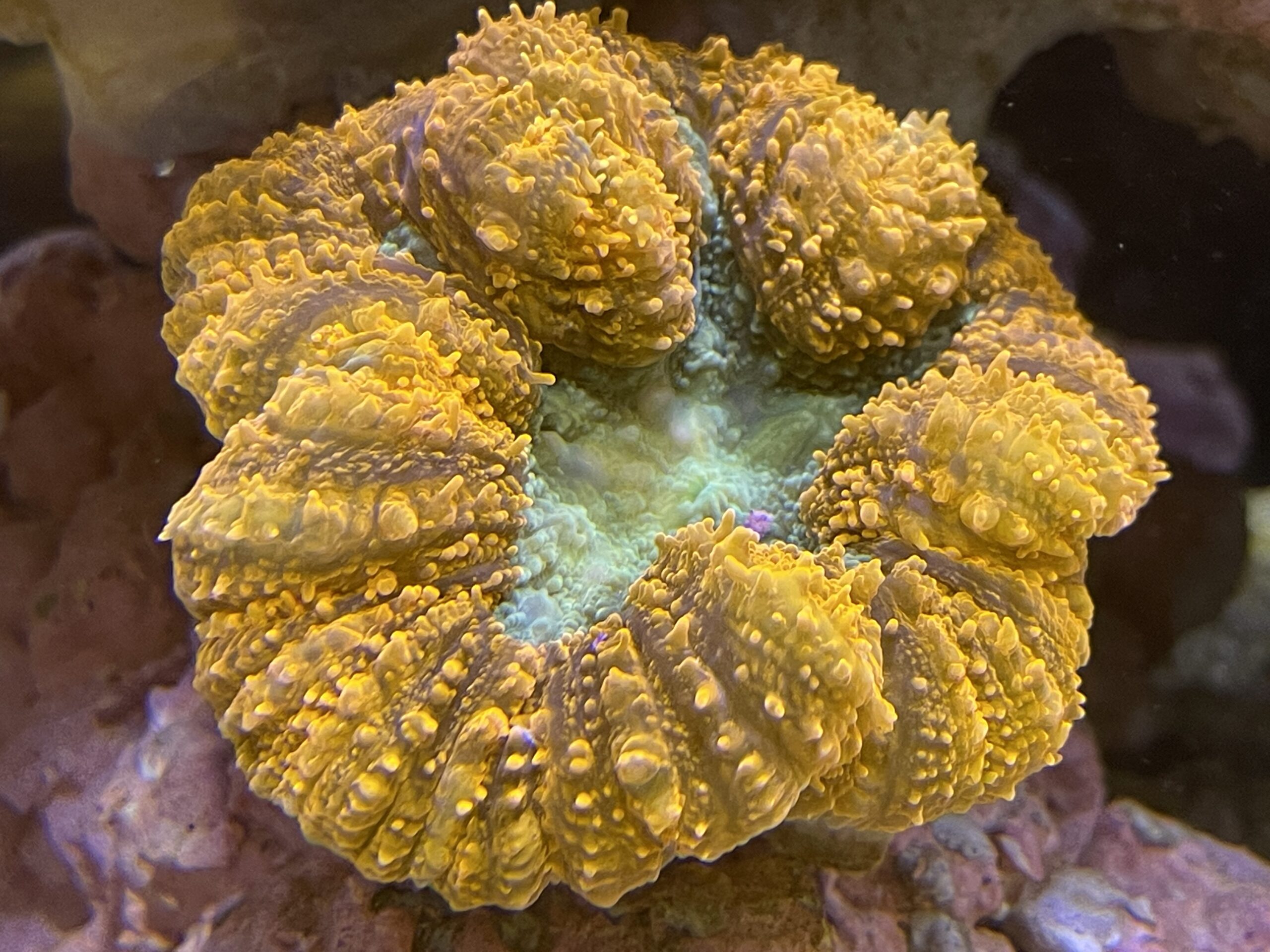
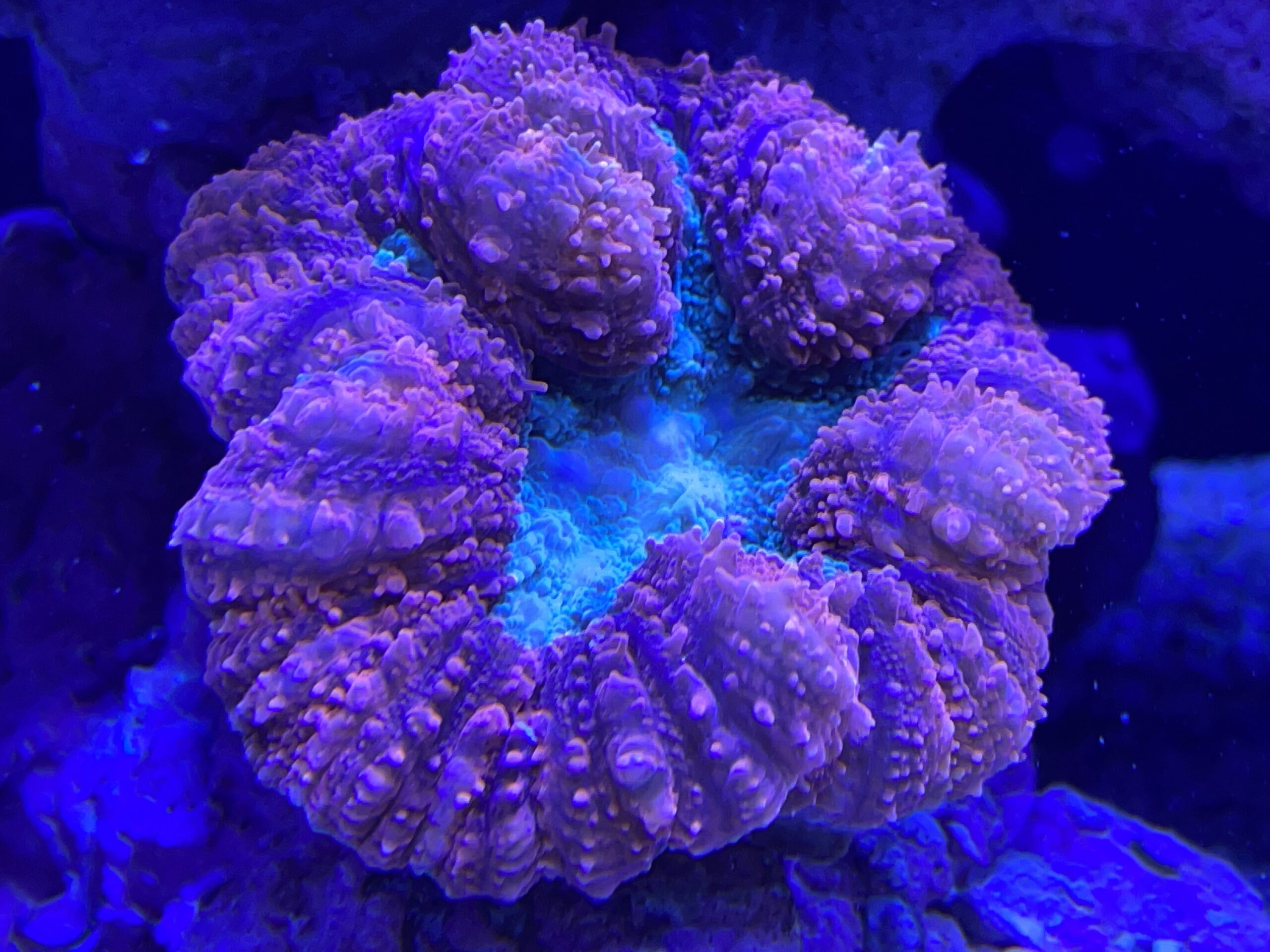
You’ll feel them if handling the coral (and they’re very obvious on a dead skeleton,) but the white spikes may even show through on a newly imported specimen as they’re prone to flesh damage while being transported, especially if they’re allowed to roll around loose, in a bag.
In the wild, those large, isolated polyps grow together to form huge colonies and may even include other Lobo species like hemprichii. ID isn’t always easy because a Google image search will undoubtedly take you down the Symphyllia rabbit hole, a genus that doesn’t exist anymore, or to the very similar-looking L.hemiprichii and flabelliformis, which are even more lobed, and may also have shaggy carpet-like flesh. Acanthastrea pachysepta too, and all can be kept in the same way.
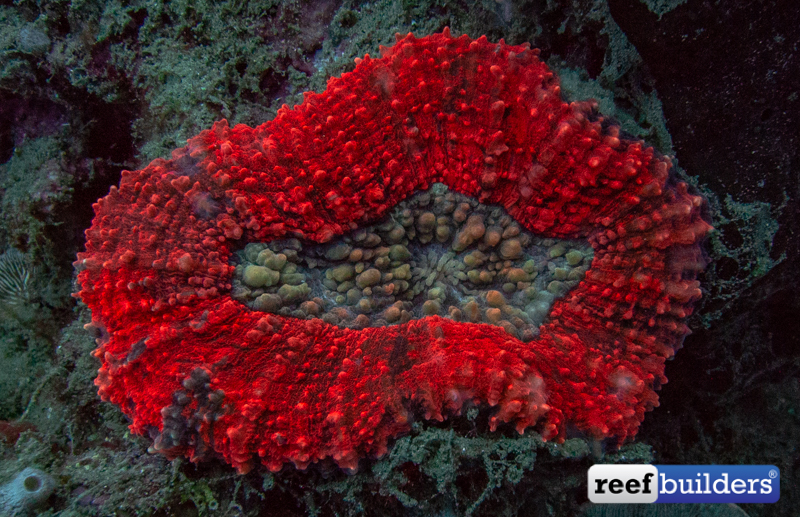
Aquarium Care
We have kept and sold hundreds of these over the years, hence the recommendation. We’ve had them in high flow, low flow, high light, low light, high and low nutrients, with little to no difference barring some paling in the low nutrient system. In terms of stinging capacity, they are well capable of looking after themselves but don’t throw out six-inch long stinging tentacles either.
They are very slow growing, so either place them next to each other in an L.robusta garden, next to Lobophyllia hemprichii as they grow side by side in the wild or just give them at least a two-inch perimeter from other coral species next to them. They grow on rocks in nature so we have always placed ours on flattish rocks at the bottom of the tank, just above the sand. We’ve fed them on everything from aminos, to artemia, mysis, and krill, to pellets and copepods. Although they’ve taken all with relish they can also go for months at a time with no target feeding whatsoever. They don’t suffer from bailout, flatworms, brown jelly, and as long as you maintain water chemistry close to natural seawater, they are very hardy and undemanding.
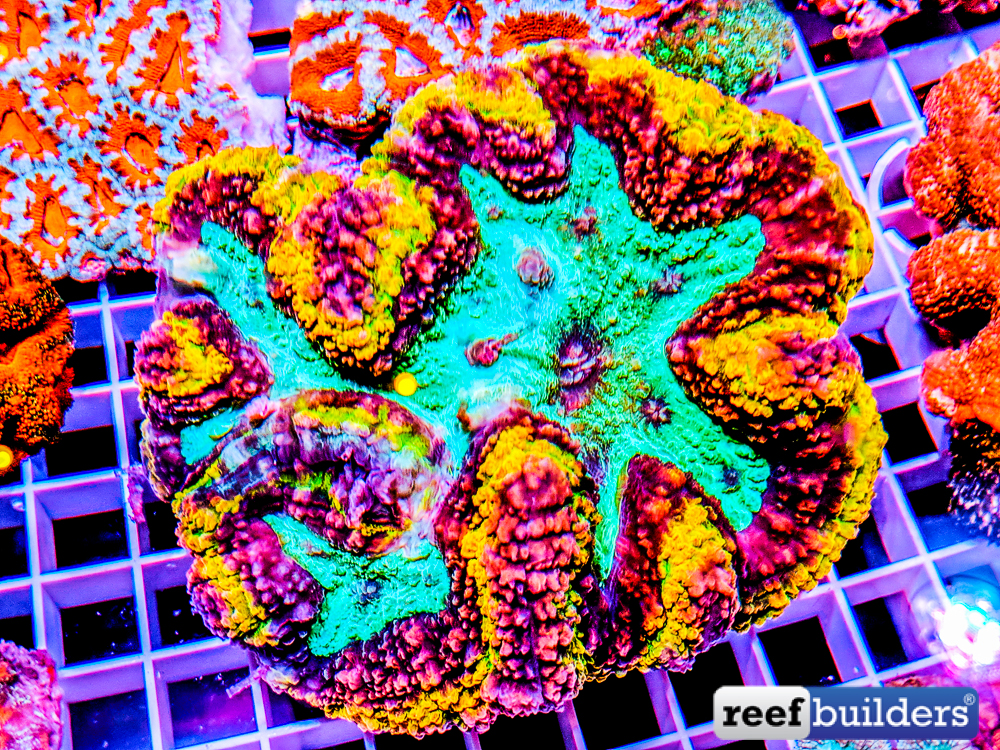
Colors
Ours has an orangy/pink wall with a green center, and most available are variations on this with red/orange/pink walls, depending on your lighting and the flavor of the orange lens you use. The majority of wild colonies are grey, but every so often you do see an exceptional one in the bobby with a turquoise or blue center, a red and purple wall, a red and yellow banded wall, or even a true rainbow, displaying seven colors.
Rainbow symphyllia like those of what was Symphyllia wilsoni (now Australophyllia wilsoni,) are to be treated with extreme caution, as they are often temperate, not tropical for a start, and are known to bleach, but in contrast, a rainbow Lobophyllia robusta should be just as hardy as a common-or-garden one. Like us, you’re probably guilty of walking straight past most spiny brains. They don’t carry the funky names and aren’t fragged, but when you combine their ease of keeping, longevity, and eye-catching color, they’re definitely an LPS coral that’s worthy of a second look.


